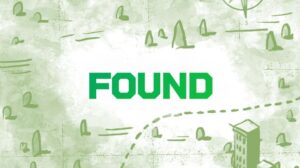There’s a lot of legwork involved in selling a business of any stripe. You need to know how the business is valued, the key metrics you must focus on in order to determine its worth, and you need to be capable of effective negotiation, ensuring you receive the best deal possible. You need to figure out how, where, and why you’re selling. Finally, you need to understand the people you’re selling to — who they are, what they want, and how best to communicate with them. With software-as-a-service (SaaS) businesses, there’s one other thing you need to do, and it’s the most important of all. You need to ensure that your business is as streamlined and efficient as possible. When selling a SaaS business, you need to realize that most buyers interested in purchasing SaaS companies are doing so because they provide easy revenue.

Header Image: https://pixabay.com/photos/business-businessman-colleague-15498/
Meta Description: Selling your software as a service business is a highly involved process requiring a great deal of research and legwork. However, it ultimately boils down to one critical driver — one thing you absolutely must remember.
This means that if a business is overly complex, or worse, cannot operate without its owner, it’s of little value to prospective buyers.
Unfortunately, in many cases, this is easier said than done. I frequently see business owners whose manner of operation only makes sense to them. Entrepreneurs who take such an active role in their business’s day-to-day that their absence causes everything to collapse in on itself.
In my experience, this tends to be far more common in the SaaS space. Generally speaking, SaaS entrepreneurs tend to be developers of some sort, people focused more on the software side than the business side. This can create several issues when selling a SaaS business.
A Sloppy Backend
Most developers know that they should avoid redundant code, provide ample documentation, and focus on readability. Many developers also ignore these best practices. Another dev should be able to look at your code and figure out how everything works (and more importantly, how they might incorporate additional features) at a glance.
If you programmed your SaaS business’s offerings yourself, take a look at the code. Ask if you’d be able to understand it were you a stranger. If your answer is ‘no,’ then you need to optimize things before you even think about selling a SaaS business.
Confusing Financials
Accountants and bookkeepers exist for a reason.
Taxes can be confusing and cumbersome, especially on the business side. However, they’re also necessary, as is keeping comprehensive, organized financial records. Again, this is something I frequently see small business owners neglect, especially in the SaaS space.
You cannot afford to do this, and not just because it makes determining your business’s financial health an absolute nightmare. Sloppy records mean you’re likelier to make a mistake when tax season rolls around. And with each mistake, there’s a chance your business will be audited.
Trust me, you do not want that. If the prospect of organizing your own financials seems in some way insurmountable, bite the bullet and shell out for a bookkeeper, an accountant, or both. The expense will be more than worth it, both for yourself and for anyone who might purchase your business.
No Documentation
To you, your SaaS business is relatively self-explanatory. You’re incredibly familiar with the inner workings of your software, and you know how to keep the lights on, so to speak. Do not assume that others possess that same understanding.
Regardless of whether you are selling a SaaS business or not, you need to create a knowledge base. As such, if you’ve not already done so, endeavor to create comprehensive documentation about your business and its software. Your goal here is to provide every instruction a new buyer could possibly need in order to ensure everything runs effectively.
Inefficient Operations
What systems does your business have in place for subscription management? What about marketing, human resources, and payroll? Customer relations and tech support?
Most businesses fall into one of three camps.
- You haven’t really given it much thought, meaning there are multiple inefficiencies across your business.
- You’ve incorporated numerous third-party solutions designed to automate and streamline your business processes.
- You’ve coded solutions to streamline things on your own.
If you’re part of the second or third camp, you should be fine. Just make sure the code for your additional components is just as clean as the code for your core app, and that your knowledge base covers the additional components. If you’re part of the first camp, you have some work to do.
Ideally, you should always be looking for opportunities to optimize your business. Redundant tasks that you might automate, ways to enhance your knowledge and glean better business insights, opportunities for cleaner and more efficient code. You get the idea.
Don’t just optimize blindly, however. Think and plan. Consider what areas will give you the greatest return, as going over the top might result in greater complexity rather than enhanced efficiency.
A Micromanaging Owner
For many, their SaaS business is their baby. Letting go and selling it, no matter the reasons, is often easier said than done. Those same entrepreneurs tend to micromanage to the extreme.
They have a hand in everything about their business’s day-to-day. They’re either unwilling to delegate or incapable of doing so. And that makes selling an absolute nightmare.
Before you sell, it would be wise to take a step back. Delegate as much as possible, and see how your business runs without your presence. Address any problems as they surface.
Building a Better SaaS Business
There’s a lot that goes into selling a business, especially if you’re in the SaaS space. But the most important thing by far is ensuring that your business effectively runs itself prior to selling a SaaS business. That any buyer, no matter their level of expertise, can readily pick up where you left off.
While there are certainly exceptions to the rule, most people don’t purchase SaaS businesses because they’re looking for a challenge. They do so because they want to establish a new, easy revenue stream. With that in mind, the simpler and more streamlined you make your business, the better your luck will be when it finally comes time to make the sale.









